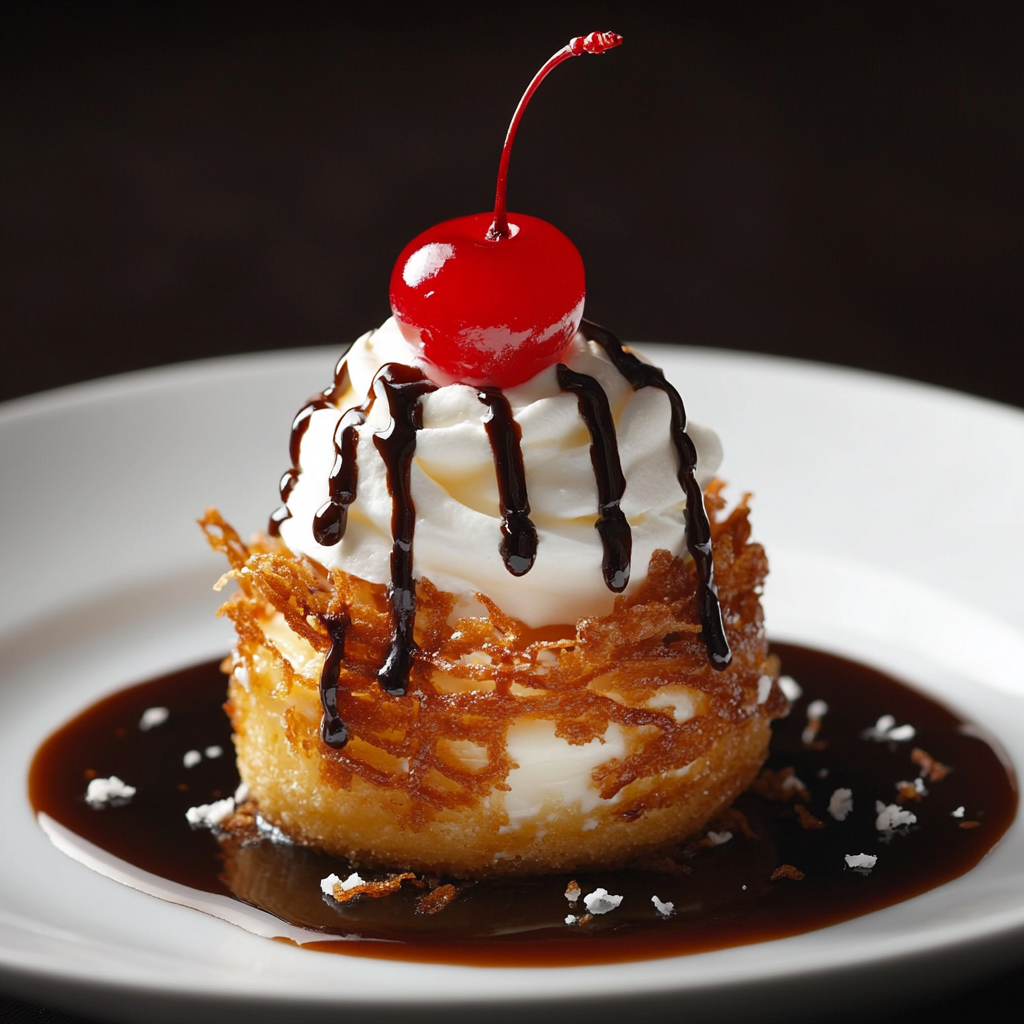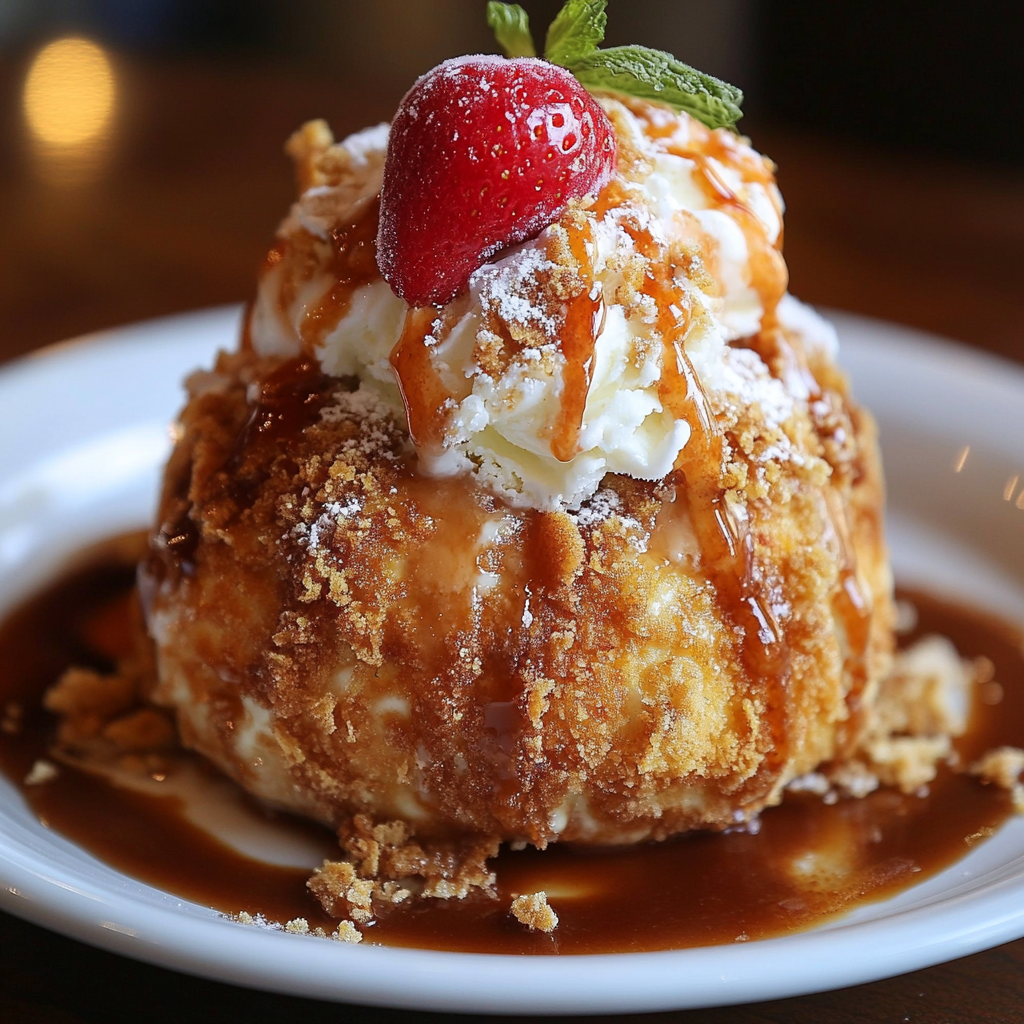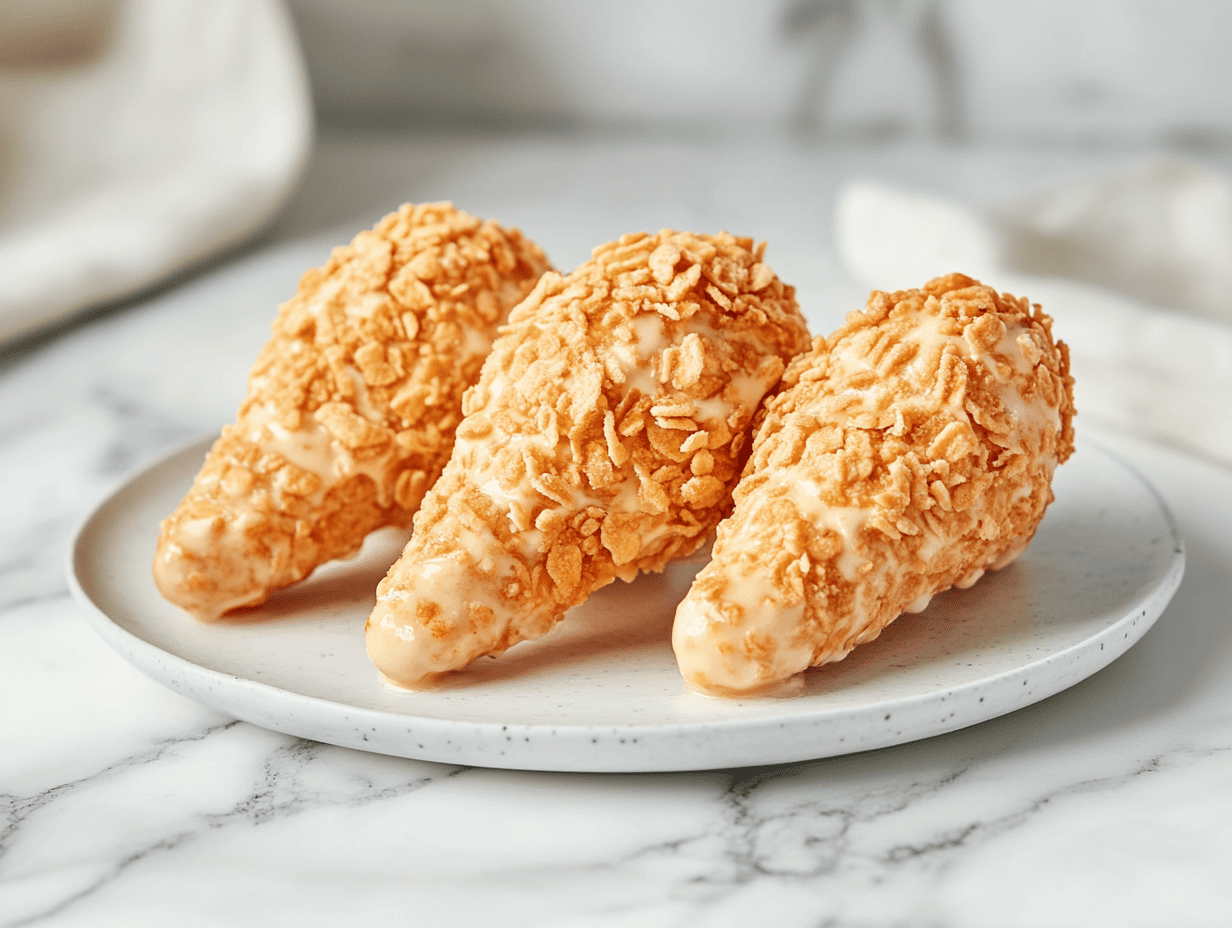How does the ice cream not melt in fried ice cream? Fried ice cream is a dessert that seems to defy the laws of nature. How can something so cold survive a dip in hot oil? It’s a fun mystery that has fascinated people for years. Imagine biting into a crispy, golden coating only to find creamy, cold ice cream waiting inside. Sounds magical, right? But there’s science behind this surprising treat, and it’s not as complicated as it seems.
In this article, we’ll explore the secrets of fried ice cream. We’ll look at why the ice cream doesn’t melt, how it’s made, and what makes it so delicious. By the end, you’ll not only understand the process but might even be inspired to try making it yourself!
Table of Contents
What is Fried Ice Cream?
A Quick History of Fried Ice Cream
Fried ice cream has an interesting past. Some say it first appeared at fancy dinners in the 1800s, while others believe it was introduced at the 1893 World’s Fair in Chicago. In more modern times, it’s often associated with Asian and Mexican cuisines. Restaurants serving dishes like tempura or churros often feature fried ice cream as a unique dessert option.
Why Is It Special?
What makes fried ice cream so unique is its combination of textures and temperatures. The crunchy, warm outer shell contrasts with the creamy, cold ice cream inside, creating a dessert that’s hard to forget.

The Science Behind Fried Ice Cream
Fried ice cream might seem like a magical trick, but it’s all about science and careful preparation. The key to keeping the ice cream from melting lies in insulation and speed. Let’s break it down step by step.
Why Doesn’t the Ice Cream Melt?
When you fry ice cream, the hot oil touches only the outer coating, not the ice cream itself. The coating acts like a barrier, protecting the ice cream from the heat. Plus, the frying process is very quick—usually just a few seconds. This is not enough time for the heat to reach the ice cream and melt it.
The Role of Insulation
The insulation comes from a thick layer of coating. Before frying, the ice cream ball is rolled in something that freezes well, like breadcrumbs, crushed cookies, or even cornflakes. This layer freezes solid in the freezer before it is fried, creating a shell that keeps the heat out.
Temperature Tricks
Another important factor is temperature. The ice cream starts out extremely cold, often frozen at a much lower temperature than usual. This gives it a head start against the heat. By the time the outer layer is cooked to a golden crisp, the ice cream inside is still frozen and creamy.
The Quick Frying Process
When the coated ice cream hits the oil, it fries at a very high temperature—around 375°F (190°C). The high heat ensures the coating cooks fast, in less than 10 seconds. This quick frying time means the ice cream doesn’t have enough time to melt.
In the next section, we’ll look at the ingredients and steps used to prepare fried ice cream so you can understand the process even better!
Ingredients and Preparation
Fried ice cream might sound complicated, but the ingredients and steps are surprisingly simple. With a little preparation and patience, you can recreate this amazing dessert at home. Let’s take a closer look at what’s involved.
Common Ingredients Used
To make fried ice cream, you’ll need:
- Ice Cream: Vanilla is the classic choice, but you can use any flavor.
- Coating: Crushed cornflakes, breadcrumbs, or crushed cookies work well. Some recipes add sugar or cinnamon for extra flavor.
- Binder: Egg whites or a thin batter helps the coating stick to the ice cream.
- Oil: A neutral oil like vegetable or canola oil for frying.
- Optional: Whipped cream, chocolate sauce, or fruit for garnish.
Preparation Steps
- Scoop the Ice Cream
Start by scooping the ice cream into firm balls. Make sure they are tightly packed, as this helps them stay intact during frying. Place the scoops on a tray and freeze them until they are rock solid, usually for at least 2 hours. - Apply the Coating
Roll the frozen ice cream balls in your coating mixture (e.g., crushed cornflakes). To ensure full coverage, you can dip the ball in egg whites or batter before rolling it in the crumbs. For extra crunch, repeat this process to create a thicker layer of coating. - Deep Freeze Again
After coating the ice cream, freeze the balls again for at least 2 hours. This step is essential because it hardens the coating, making it ready for the hot oil. - Heat the Oil
Heat your oil to about 375°F (190°C). The oil must be hot enough to cook the coating quickly without melting the ice cream inside. - Fry the Ice Cream
Fry the coated ice cream balls for just 8–10 seconds. Watch closely to make sure the coating turns golden brown but the ice cream inside stays frozen. - Serve Immediately
Once fried, serve the ice cream immediately. Top it with whipped cream, chocolate sauce, caramel, or fruit for a delicious finishing touch.

Pro Tips for Success
- Make sure the ice cream is as cold as possible before frying.
- Work quickly when handling the ice cream to prevent melting.
- Use a thermometer to ensure the oil reaches the right temperature.
The Insulation Process
The secret to fried ice cream lies in the protective layer that surrounds the frozen treat. This layer, made from the coating and quick frying, acts as an insulator, shielding the ice cream from the heat. Let’s take a closer look at how this process works.
The Coating Material
The coating isn’t just for crunch—it’s the hero that keeps the ice cream cold. Here’s how it plays its role:
- Thick and Uniform Layer: The coating must completely cover the ice cream without any gaps. A double coating, where the ice cream is dipped twice into the crumbs, ensures better insulation.
- Freezer-Friendly Ingredients: Crushed cornflakes, cookies, or breadcrumbs work well because they freeze solid and don’t let heat through easily. Adding sugar or cinnamon can also enhance flavor without affecting the insulating quality.
How It Keeps Heat Out
When the coated ice cream is dropped into hot oil, the outer layer begins to fry immediately. This quick reaction creates a golden crust that seals the inside from the heat. Since the frying happens in just a few seconds, the heat doesn’t have enough time to penetrate deeper.
Quick Frying Technique
Timing and temperature are critical when frying ice cream:
- High Heat: The oil must be at 375°F (190°C) to crisp the coating quickly. Lower temperatures would allow the heat to seep into the ice cream, causing it to melt.
- Short Duration: The frying process lasts just 8–10 seconds. This is long enough to cook the coating but not long enough to affect the frozen ice cream inside.
Why It Works
The combination of:
- Extremely Cold Ice Cream: Starting with ice cream frozen at a much lower temperature than usual gives it more resistance to heat.
- Thick Coating: Acts like a thermal barrier.
- Fast Frying: Ensures the heat stays on the outside.
What Happens If You Skip Steps?
If the coating is too thin, the ice cream isn’t frozen enough, or the oil isn’t hot enough, the ice cream could start melting. This would ruin the dessert and make it difficult to fry properly.
By mastering the insulation process, you can enjoy a dessert that’s crispy on the outside and perfectly cold on the inside.
you might also like:
FAQs About Fried Ice Cream
Fried ice cream is a fascinating dessert that raises many questions. Here are answers to some of the most common ones to satisfy your curiosity.
Why is the ice cream still cold after frying?
The ice cream stays cold because of its thick coating and the quick frying process. The coating acts as a barrier, and the frying time is so short (usually 8–10 seconds) that the heat doesn’t reach the frozen core.
How long does frying take?
Frying fried ice cream takes less than 10 seconds. This is just enough time to crisp the coating without affecting the temperature of the ice cream inside.
Can I use any type of ice cream?
Yes, you can use any flavor of ice cream. However, harder and denser ice creams, like vanilla or chocolate, tend to hold up better during the frying process. Softer varieties may melt too quickly.
What are the best coatings for fried ice cream?
The best coatings are ones that freeze solid and fry quickly. Common options include:
- Crushed cornflakes
- Crushed cookies (like Oreos)
- Breadcrumbs
- Crushed graham crackers
Adding sugar, cinnamon, or even shredded coconut can enhance the flavor.
Can I make fried ice cream without deep frying?
Yes! For a no-fry version, you can roll the ice cream balls in a coating, such as crushed cookies or cornflakes, and freeze them until firm. While this doesn’t provide the same crispy texture as frying, it’s a delicious alternative that’s easier to prepare.
Is fried ice cream hard to make at home?
Not at all! The steps are simple: freeze the ice cream balls, coat them, freeze again, and fry quickly in hot oil. As long as you follow the steps carefully—especially keeping the ice cream frozen and the frying time short—it’s easy to make at home.
What are some popular toppings for fried ice cream?
Popular toppings include:
- Whipped cream
- Chocolate or caramel sauce
- Fresh fruit like strawberries or bananas
- Chopped nuts
- Sprinkles for extra fun
Conclusion
Fried ice cream is a dessert that combines science, technique, and deliciousness. The secret lies in the balance of extreme cold, a thick protective coating, and quick frying at high heat. These factors work together to create a golden, crispy outer shell while keeping the ice cream inside frozen and creamy. But have you ever wondered, how does the ice cream not melt in fried ice cream?
Making fried ice cream may seem like a challenge at first, but it’s surprisingly simple once you understand the process. If you’ve been curious about how does the ice cream not melt in fried ice cream, the answer lies in its careful preparation. By freezing the ice cream thoroughly, using the right coating, and frying it quickly, you can create a dessert that amazes and delights.
This unique treat has a way of sparking curiosity and bringing joy to anyone who tastes it. As you savor each bite, you might find yourself still asking, how does the ice cream not melt in fried ice cream? Whether you enjoy it at a restaurant or try making it at home, fried ice cream offers a memorable combination of temperatures, textures, and flavors that’s hard to beat.
So next time you see fried ice cream on a menu or think about trying it yourself, you’ll know exactly how it works—and how does the ice cream not melt in fried ice cream!

